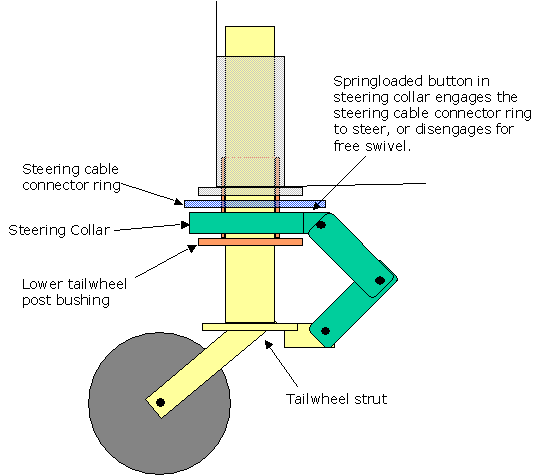The tailwheel takes a lot of abuse and can be hard to inspect because of crouched position and the amount of dirt that accumulates in the tailwheel area. On '77B, there were three problems with the tailwheel. First off, the tailwheel steering collar, which is an aluminum casting that rotates around the outer surface of the tailwheel post, had worn so that the collar was extremely sloppy. Tailwheel steering still worked but would not release to free swivel very crisply. The sloppiness in the steering collar had also worn into the retainer flange at the bottom of the lower tailwheel post bushing. This bronze bushing keeps the steering collar in place, and the retainer flange was worn so that it was about a third of the original dimension. Both the collar and bushing needed replacement. The bushing would have been easy to fabricate, and the collar could have been bushed, but I elected to get a new set from Bellanca, Inc. to reduce the hassle.

The second problem was discovered upon removing the tailwheel oleo strut. Within the strut the spring rides on the bottom of the outer strut, and mates with the inner strut on a bronze end-fitting. This fitting had been worn by the steel spring and all of the wear-chips were in the bottom of the outer strut. Additionally the rubber seals at the top of the strut were worn out and brittle. A cleanup removed the metal chips, and new V-ring seals from a hydraulic supply store sealed the strut. Unfortunately the new seals didn't last long so the strut leaks again.
Lastly, the two clevis bolts that connect the steering cable connector ring to the tailwheel steering cables were badly worn. Replacement with new clevis bolts solved the problem.